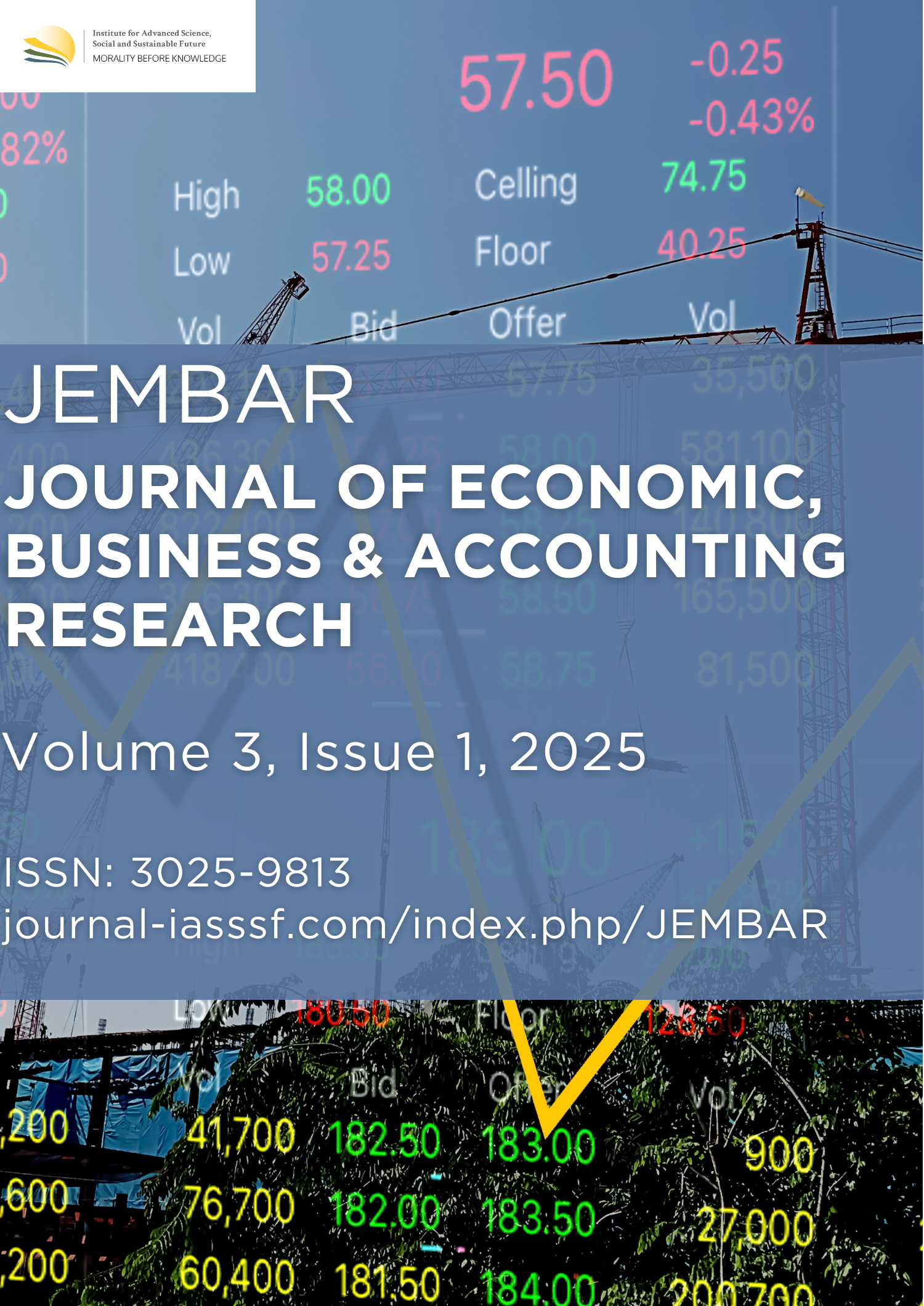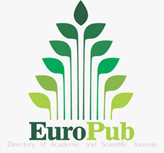Marketing strategy with marketing intelligence to increase the market share of Indonesian Sharia Banks
DOI:
https://doi.org/10.61511/jembar.v3i1.2025.1931Keywords:
conventional bank, Indonesian islamic bank, marketing intelligence, market share, marketing strategyAbstract
Background: With the potential market share as the country with the largest Muslim population in the world, the existence of Indonesian Sharia Bank/Bank Syariah Indonesia (BSI) in Indonesia has indeed increased the development of Islamic banking, but has not been able to keep up with the prevalence of conventional bank market share so that both external and internal marketing strategies are needed with the utilization of marketing intelligence. This study aims to identify the characteristics of BSI customers by analyzing processes and performance, including comparing strengths and weaknesses with conventional banks so as to obtain marketing strategies to increase BSI market share. Methods This research is descriptive with a qualitative approach to the data obtained from interviews, documentation, and analysis of research subjects. Findings: The results show that the characteristics of BSI customers are young urban people with higher education and middle to upper economic levels. In BSI's marketing process and performance, the utilization of marketing intelligence is likened to an intelligence cycle, although it is not optimal because it still depends on data from external research companies. BSI has also not optimally implemented Blue Ocean Strategy that utilizes product uniqueness and tends to conduct Red Ocean Strategy to dominate the conventional bank market in increasing market share. Conclusion: The recommended marketing strategies include utilizing product uniqueness to create new markets, developing user-friendly transaction technology and digital platforms, strengthening positioning and brand awareness through Islamic ecosystem-based marketing, and intensifying digital marketing as a brand presence that increases public trust. Novelty/Originality of this article: The novelty aspect refers to the new or innovative elements in a research study that distinguish it from previous work. It includes unique contributions, new methods, or findings that have not been explored before in the field.
References
Abasimel, N. A. (2023). Islamic banking and economics: concepts and instruments, features, advantages, differences from conventional banks, and contributions to economic growth. Journal of the Knowledge Economy, 14(2), 1923-1950. https://doi.org/10.1007/s13132-022-00940-z
Abdalla, M. M., Oliveira, L. G. L., Azevedo, C. E. F., & Gonzalez, R. K. (2018). Quality in Qualitative Organizational Research: types of triangulation as a methodological alternative. Administração: Ensino e Pesquisa, 19(1), 66–98. https://doi.org/10.13058/raep.2018.v19n1.578
Abdullah, T., & Wahjusaputri, S. (2018). Bank dan Lembaga Keuangan. Mitra Wacana Media.
Abedian, M., Amindoust, A., Maddahi, R., & Jouzdani, J. (2022). A Game Theory Approach to Selecting Marketing-Mix Strategies. Journal of Advances in Management Research, 19(1), 139–158. https://doi.org/10.1108/JAMR-10-2020-0264
Alam, M. K., Ab Rahman, S., Tabash, M. I., Thakur, O. A., & Hosen, S. (2021). Shariah supervisory boards of Islamic banks in Bangladesh: expected duties and performed roles and functions. Journal of Islamic Accounting and Business Research, 12(2), 258-275. https://doi.org/10.1108/JIABR-02-2020-0035
Apriliani, S., Maulidin, M., & Nurjannah, A. (2022). Strategi Marketing Pegawai Bank Syariah Dalam Merekrut Nasabah Di Bank Syariah Indonesia Kcp Plered 2. Al Naqdu: Kajian Keislaman, 03(01), 1–9. https://www.jurnal.iaicirebon.ac.id/index.php/alnaqdu/article/view/20
As’ad, S. (2020). Sharia Bank Marketing Communication Strategies in Increasing Brand Awareness (Study on Islamic Bank in Yogyakarta City). Afkaruna: Indonesian Interdisciplinary Journal of Islamic Studies, 20(2), 228–248. https://doi.org/10.18196/aiijis.2020.0122.228-248
Asnaini, & Yustati, H. (2017). Lembaga Keuangan Syari’ah (Teori dan Praktiknya di Indonesia). Pustaka Pelajar.
Bans-Akutey, A., & Tiimub, B. M. (2021). Triangulation in Research. Academia Letters, 3392, 1–6. https://doi.org/10.20935/al3392
Boneva, L., Ferrucci, G., & Mongelli, F. P. (2022). Climate change and central banks: what role for monetary policy?. Climate Policy, 22(6), 770-787. https://doi.org/10.1080/14693062.2022.2070119
Cui, J., & Li, T. (2025). Religion, Power, and National Identity: The Dual Role of Islam in the History and Modernization of the Maldives. Religions, 16(2), 201. https://doi.org/10.3390/rel16020201
Dam, N. A. K., Dinh, T. Le, & Menvielle, W. (2019). Marketing Intelligence from Data Mining Perspective — A Literature Review. International Journal of Innovation, Management and Technology, 10(5), 184–190. https://doi.org/10.18178/ijimt.2019.10.5.859
Defiansih, D. D., & Kardiyem. (2021). Pengaruh Religiusitas, Pendidikan Keluarga, dan Sosialisasi Keuangan Terhadap Literasi Keuangan Syariah Dengan Kecerdasan Intelektual Sebagai Variabel Moderasi. Jurnal Ekonomi Dan Pendidikan, 18(1), 34–51. https://doi.org/10.21831/jep.v18i1.33146
Febriansyah, R., Fasa, M. I., & Suharto. (2022). Analisis SWOT dalam Strategi Pemasaran Produk Perbankan Syariah di Indonesia. Al-Kharaj : Jurnal Ekonomi, Keuangan & Bisnis Syariah, 4(1), 62–72. https://doi.org/10.47467/alkharaj.v4i1.364
Feil, F., & Feijó, C. (2021). Development banks as an arm of economic policy–promoting sustainable structural change. International Journal of Political Economy, 50(1), 44-59. https://doi.org/10.1080/08911916.2021.1894827
Fida, B. A., Ahmed, U., Al-Balushi, Y., & Singh, D. (2020). Impact of Service Quality on Customer Loyalty and Customer Satisfaction in Islamic Banks in the Sultanate of Oman. SAGE Open, 10(2), 1–10. https://doi.org/10.1177/2158244020919517
Grassi, L., Figini, N., & Fedeli, L. (2022). How does a data strategy enable customer value? The case of FinTechs and traditional banks under the open finance framework. Financial Innovation, 8(1), 75. https://doi.org/10.1186/s40854-022-00378-x
Harmoko, I. (2018). Strategi Pemasaran Produk Penghimpunan Dana Bank Syariah dalam Upaya Meningkatkan Pangsa Pasar Perbankan Syariah. Wadiah, 2(1), 16–28. https://doi.org/10.30762/wadiah.v2i1.2991
Harmono. (2022). Manajemen Keuangan Berbasis Balanced Scorecard Pendekatan Teori, Kasus, dan Riset Bisnis. Bumi Aksara.
Hayati, S., Susianti, N., & Azim, M. P. (2022). Marketing Strategy of Griya iB Hasanah Financing Products: Evidence from the Bank Syariah Indonesia in Mataram. Maliki Islamic Economics Journal, 1(2), 70–85. https://doi.org/10.18860/miec.v1i2.14229
Hendar, & Mutamimah. (2017). Sharia Marketing Innovativeness on Marketing Performance Model. Universitas Islam Sultan Agung.
Hernando, R. (2023). Segmentasi, Positioning, Targerting. In Sepriano & Efitra (Eds.), Manajemen Pemasaran (Implementasi Manajemen Pemasaran pada Masa RevolusiIndustri 4.0 menuju era Society 5.0. PT. Sonpedia Publishing Indonesia.
Hidayat, A. R., & Trisanty, A. (2020). Analisis Market Share Perbankan Syariah di Indonesia. At-Taqaddum, 12(2), 183–200. https://doi.org/10.21580/at.v12i2.6449
Hidayatullah, M. F., Irawan, B., Roziq, A., & Ma'mun, S. (2023). Enhancing Customer in Islamic Banking: a Case Study of Bank Syariah Indonesia’s Marketing Strategy. International Journal of Islamic Business and Economics (IJIBEC), 7(2), 128-138. https://doi.org/10.28918/ijibec.v7i2.1966
Idrus, M. (2011). Metode Penelitian Ilmu Sosial: Pendekatan Kualitatif dan Kuantitatif. Erlangga.
Junaidi, J., Anwar, S. M., Alam, R., Lantara, N. F., & Wicaksono, R. (2023). Determinants to adopt conventional and Islamic banking: evidence from Indonesia. Journal of Islamic Marketing, 14(3), 892-909. https://doi.org/10.1108/JIMA-03-2021-0067
Kasmir. (2019). Manajemen Perbankan. RajaGrafindo Persada.
Lahtinen, V., Dietrich, T., & Rundle-Thiele, S. (2020). Long Live the Marketing Mix. Testing the Effectiveness of the Commercial Marketing Mix in a Social Marketing Context. Journal of Social Marketing, 10(3), 357–375. https://doi.org/10.1108/JSOCM-10-2018-0122
Mahmoud, M. A., Seidu, A. S., Tweneboah-Koduah, E. Y., & Ahmed, A. S. (2024). Green Marketing Mix and Repurchase Intention: The Role of Green Knowledge. African Journal of Economic and Management Studies. https://doi.org/10.1108/AJEMS-04-2023-0137
Mardiyanto, E. (2021). Implementasi Marketing Mix dalam Pemasaran Perbankan Syariah. Al-Iqtishod : Jurnal Pemikiran Dan Penelitian Ekonomi Islam, 9(1), 93–103. https://doi.org/10.37812/aliqtishod.v9i1.227
Moleong, L. J. (2017). Metode Penelitian Kualitatif. Remaja Rosdakarya.
Mukti, T. W., & Suprayogi, N. (2019). Apakah Bank Syariah Berbeda dengan Bank Konvensional (Kajian Fenomenologi). Jurnal Ekonomi Syariah Teori Dan Terapan, 6(6), 1137–1152. https://doi.org/10.20473/vol6iss20196pp1137-1152
Murdiyanto, E. (2020). Penelitian Kualitatif (Teori dan Aplikasi disertai contoh proposal). UPN ”Veteran” Yogyakarta Press.
Noval, M., & Aisyah, L. (2021). Analisis Pengaruh Dana Syirkah Temporer dan Efisiensi Operasi Terhadap Profitabilitas Bank Syariah. Jurnal Ilmiah Ekonomi Islam (JIEI), 7(01), 113–122. https://doi.org/10.29040/jiei.v7i1.1640
Octaviano, A. (2024). Potensi Pasar Bank Syariah Besar, BSI Targetkan Peningkatan 3 Juta Nasabah Tiap Tahun. https://keuangan.kontan.co.id/news/potensi-pasar-bank-syariah-besar-bsi-targetkan-peningkatan-3-juta-nasabah-tiap-tahun
Otoritas Jasa Keuangan. (2022a). Laporan Perkembangan Keuangan Syariah Tahun 2021: Menjaga Ketahanan Keuangan Syariah dalam Momentum Pemulihan Ekonomi. Otoritas Jasa Keuangan. https://ojk.go.id/id/kanal/syariah/data-dan-statistik/laporan-perkembangan-keuangan-syariah-indonesia/Pages/Laporan-Perkembangan-Keuangan-Syariah-Indonesia-2021.aspx
Otoritas Jasa Keuangan. (2022b). Siaran Pers Survei Nasional Literasi dan Inklusi Keuangan Tahun 2022. https://ojk.go.id/id/berita-dan-kegiatan/siaran-pers/Pages/Survei-Nasional-Literasi-dan-Inklusi-Keuangan-Tahun-2022.aspx
Otoritas Jasa Keuangan. (2023). Laporan Perkembangan Keuangan Syariah Indonesia Tahun 2022. Otoritas Jasa Keuangan. https://ojk.go.id/id/kanal/syariah/data-dan-statistik/laporan-perkembangan-keuangan-syariah-indonesia/default.aspx
Palazzo, M., & Micozzi, A. (2024). The SWOT analysis: An evolving decision-making model. In Rethinking Decision-Making Strategies and Tools: Emerging Research and Opportunities (pp. 53-70). Emerald Publishing Limited. https://doi.org/10.1108/978-1-83797-204-320241004
Pandukuri, N., Mazeed, S. A., & Sunanda, K. (2022). The Effect of Marketing Intelligence on Customer Loyalty. International Journal of Marketing and Human Resource Management (IJMHRM), 13(3), 39–49. https://doi.org/10.17605/OSF.IO/4GWMR
Prastiwi, A., Soemitra, A., & Dalimunte, A. A. (2022). Strategy to Increase Market Share of Bank Syariah Indonesia (BSI) in North Sumatra Region. Jurnal Ilmiah MIZANI: Wacana Hukum, Ekonomi, Dan Keagamaan, 09(01), 32–42. https://doi.org/10.29300/mzn.v9i1.7626
Putri, B. P., Fasa, M. I., & Suharto. (2022). Implementasi Analisis SWOT dalam Strategi Pemasaran Pada Pengembangan Perbankan Syariah di Indonesia. Jurnal Aplikasi Bisnis, 19(2), 209–220. https://doi.org/10.20885/jabis.vol19.iss2.art2
Ritter, T., & Pedersen, C. L. (2024). Is Segmentation a Theory? Improving the Theoretical Basis of a Foundational Concept in Business-to-Business Marketing. Industrial Marketing Management, 116, 82–92. https://doi.org/10.1016/j.indmarman.2023.11.012
Riyaldi, R., Aravik, H., & Choirunnisak, C. (2022). Analisis Strategi Pemasaran Pembiayaan Murabahah Pada Bank Syariah Indonesia (Studi Kasus Bank Syariah Mandiri KC Simpang Patal Palembang). Jurnal Ilmiah Mahasiswa Perbankan Syariah (JIMPA), 2(2), 377–394. https://doi.org/10.36908/jimpa.v2i2.82
Safrina. (2024). BSI Dukung Pengembangan Usaha Mikro, Siap Salurkan 16 Triliun KUR Syariah di 2024.
Satori, D., & Komariah, A. (2020). Metodologi Penelitian Kualitatif. Alfabeta.
Sayekti, N. W., Mauleny, A. T., Alhusain, A. S., & Lisnawati. (2020). Merger Bank Syariah Badan Usaha Milik Negara: Quo Vadis? Kajian, 25(3), 231–250. http://dx.doi.org/10.22212/kajian.v25i3.3897
Simatupang, B. (2019). Peranan Perbankan dalam Meningkatkan Perekonomian Indonesia. Jurnal Riset Akuntansi Multiparadigma (JRAM), 6(2), 136–146. https://doi.org/10.30743/akutansi.v6i2.2184
Sinambela, L. P., & Sinambela, S. (2022). Metodologi Penelitian Kuantitatif: Teoritik dan Praktik. Rajawali Press.
Srisusilawati, P., Wijayanti, I. M., Yaqin, H. N., & Eprianti, N. (2023). Marketing Strategy in Building Brand Image and Strengthening the Foundation of Sharia Bank. Journal of Profess. Bus. Review. |Miami, 8(5), 1–19. https://doi.org/10.26668/businessreview/2023.v8i5.2038
Sugiyono. (2017). Metode Penelitian Administrasi Dilengkapi dengan Metode R&D. Alfabeta.
Suhaimi, A. M. (2021). Studi Manajeman Risiko Pada Bank Syariah Indonesia (BSI). Jurnal Manajemen Risiko, 2(I), 73–78. https://doi.org/10.33541/mr.v2ii.3438
Suhartanto, D., & Nugraha, A. C. (2021). Millennial loyalty towards arti fi cial intelligence-enabled mobile banking : evidence from Indonesian Islamic banks. 13(9), 1958–1972. https://doi.org/10.1108/JIMA-12-2020-0380
Taylor, S. J., Bogdan, R., & DeVault, M. L. (2016). Introduction to Qualitative Research Methods: A Guidebook and Resource. John Wiley & Sons, Inc.
Tho’in, M. (2021). Marketing Strategy Analysis of Sharia Micro Financial Institutions in Murabahah Financing Products. Business, and Accounting Research (IJEBAR) Peer Reviewed-International Journal, 5(2), 22–29. https://doi.org/10.29040/ijebar.v5i2.2374
Vanni, K. M., & Nadan, V. S. (2023). Efektivitas Strategi Pemasaran Digital Banking Bank Syariah di Indonesia. Jurnal Ilmiah Mahasiswa Perbankan Syariah (JIMPA), 3(2), 237–248. https://doi.org/10.36908/jimpa.v3i2.197
Wahyuna, S., & Zulhamdi. (2022). Perbedaan Perbankan Syariah dengan Konvensional. Al-Hiwalah : Journal Syariah Economic Law, 1(2), 183–196. https://doi.org/10.47766/alhiwalah.v1i2.879
Widyanti, A. (2020). Strategy Marketing of Sharia Banks of Micro Sharia Wakaf in Increasing the Number of Customers (Case Study: Typical Islamic Micro Waqf Bank Kempek Cirebon). Journal of Social Science, 1(1), 1–9. https://doi.org/10.46799/jss.v1i1.2
Wu, C. W., Botella-Carrubi, D., & Blanco-González-Tejero, C. (2024). The Empirical Study of Digital Marketing Strategy and Performance in Small and Medium-Sized Enterprises (SMEs). Technological Forecasting and Social Change, 200, 1–12. https://doi.org/10.1016/j.techfore.2023.123142
Downloads
Published
How to Cite
Issue
Section
Citation Check
License
Copyright (c) 2025 Retus Aleksiva Ranggasukma, Palupi Lindiasari Samputra, Donny Yoesgiantoro

This work is licensed under a Creative Commons Attribution 4.0 International License.
















